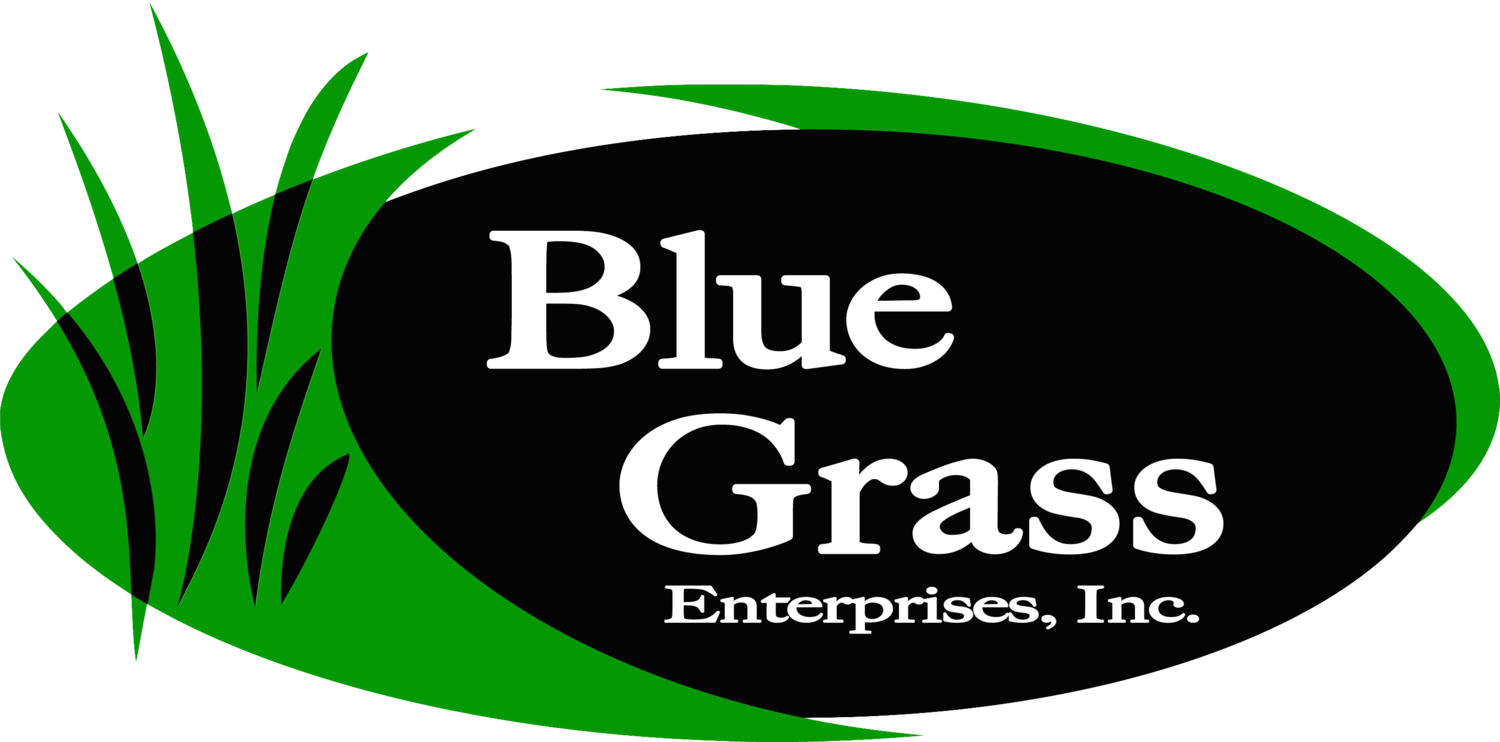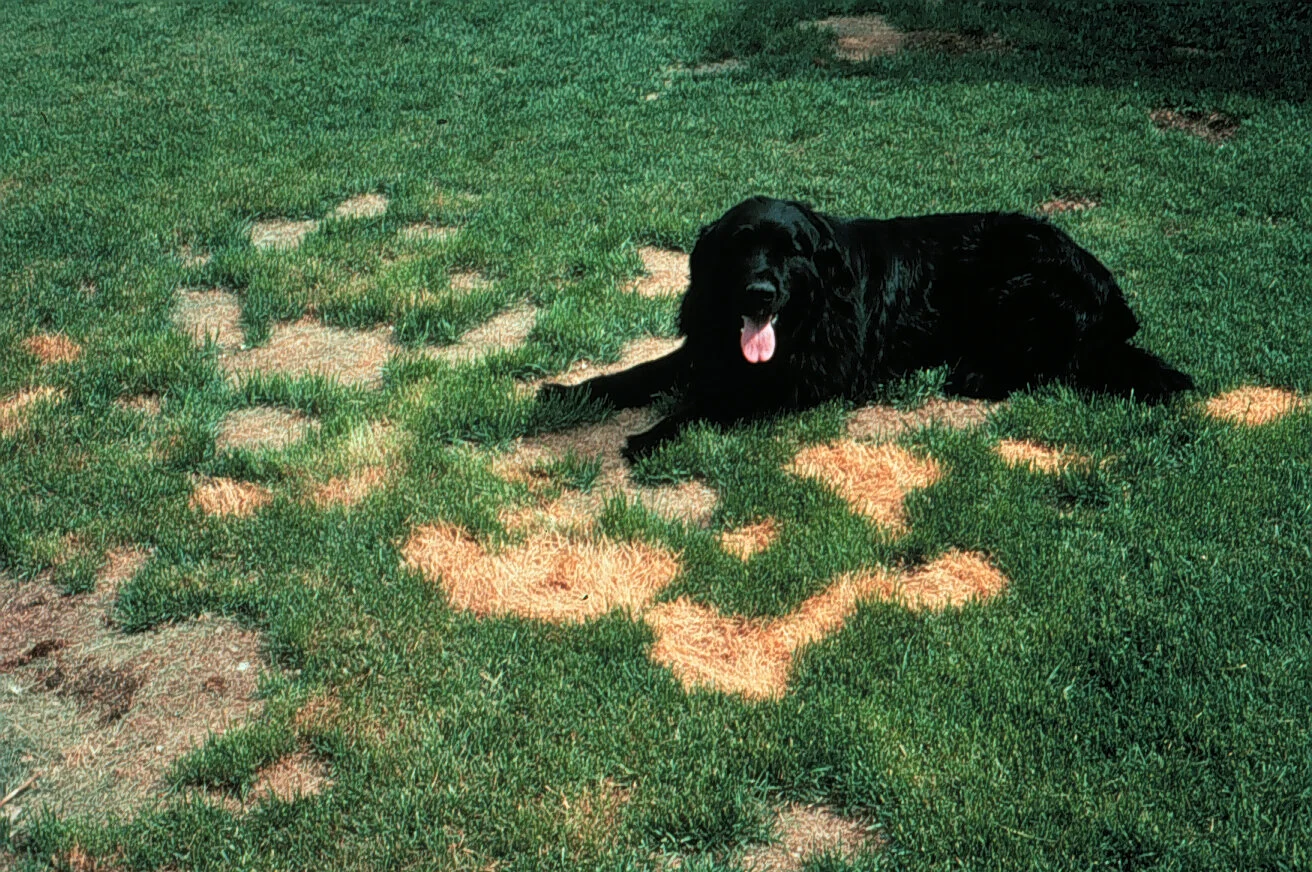Think that your lawn is safe just because it is under lots of fluffy snow? cues scary music Think again!
The good news is that hearty cool season grasses like Kentucky bluegrass usually come through winter with flying colors in terms of diseases or biological issues. The bad news is that physical damage from dogs (urine spots), voles (tunneling), snow plows (blade damage), and salt (burns) are usually pretty obvious once the snow melts away.
The REALLY good news is that we created a little cheat sheet below for how to deal with these common winter issues. (Spoiler alert: you will want to pick up 13-13-13 and gypsum from us ASAP.)
Salt Damage
Interesting tidbit: In ancient Spain, a traitor’s land would be salted after his house was demolished. This photo shows that salting the ground certainly sends a message.
But fear not! This area will likely be ok with a little TLC.
How do I fix it? Our good friends, 13-13-13 and Gypsum will come to the rescue on this project when it comes to encouraging growth and also neutralizing the effects of the salt. That said, areas that are salt damaged often have significant compaction issues as well (since they are often along sidewalks and driveways). Consider core aerating this area in between feedings of 13-13-13 and gypsum. Repeat feedings as often as necessary until the area is fully recovered.
Vole Damage
Interesting tidbit: Voles are one of the most adept species of animals in N. America; they can live from water level (they can swim!) all the way up to the tops of fir trees.
Voles love to burrow right beneath the snow to stay warm while commuting during the winter. The damage you see in your lawn is both physical and urine-based.
How do I fix it? Some of the tunnels may be deep enough that you should fill them in with some soil to keep your lawn smooth and safe for ankles and knees. It is not necessary to put the seed down. Fill the tunnels and then feed the affected area with 13-13-13 and gypsum every two weeks until the lawn is fully recovered.
Dog Damage
Interesting tidbit: Read this. Trust me, it’s the most interesting thing you’ll read today about urine.
Dog damage can really occur any time of year, but often shows up most significantly during the early spring or during times of extreme stress during the summer.
How do I fix it? Keep a bag of 13-13-13 and gypsum handy for any areas that start to show signs of spotting. Both of these products are chemical-free so they are safe around pets and people. Use a rake to fluff up the dead grass so that sunlight can get to the soil profile. Apply 13-13-13 and gypsum. (The area will need to be watered in for the products to begin to work.) Repeat application with 13-13-13 and gypsum every two weeks in affected areas until the lawn is lush and happy again.
Snow Plow Damage
Interesting tidbit: The snow plow was first invented in 1913 in Pennsylvania! USA! USA! USA!
While I know we are all grateful for the folks who stay up all night and work hard so that we can get around safely following a snowstorm, sometimes there might be a bit of a mess. Life happens. Right?
How do I fix it? Amazingly, if this homeowner were to go out now in the cold weather and put that torn-up sod back down along the curb, it would probably grow. Sod is incredibly tenacious and cold temperatures act like a giant refrigerator, preserving the plants until the spring thaw. That said, if you do wait until spring you will want to clean up the site, add soil to the area so the grade is what you want again, and then put down sod. We would not recommend seed in an area so prone to washouts and physical damage. This area will probably stress more easily due to compaction issues from the plow as well, so be sure to aerate the year once the sod is rooted. 13-13-13 and gypsum will help the new sod establish faster.





